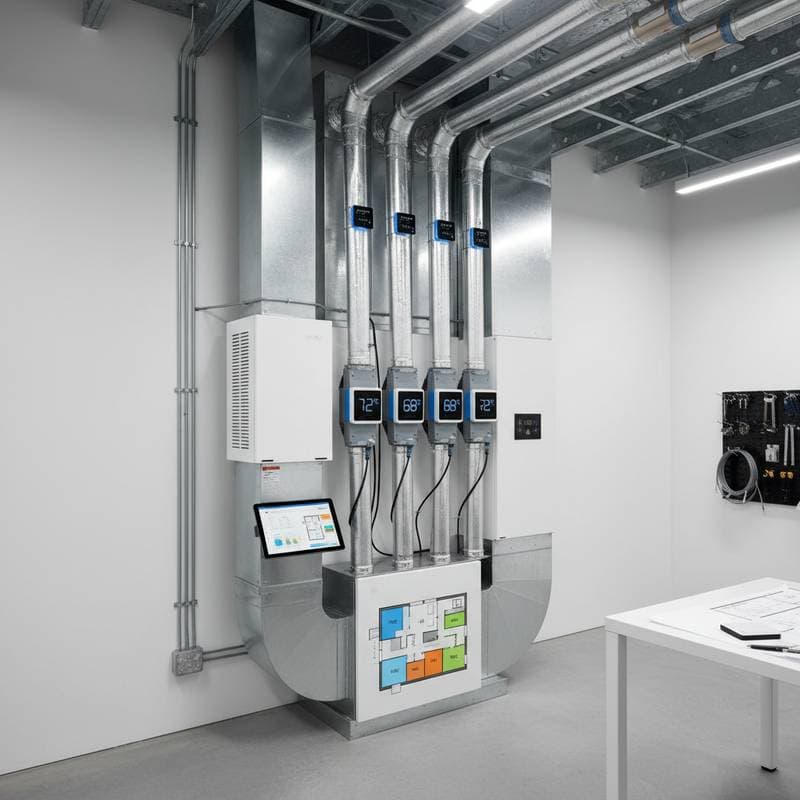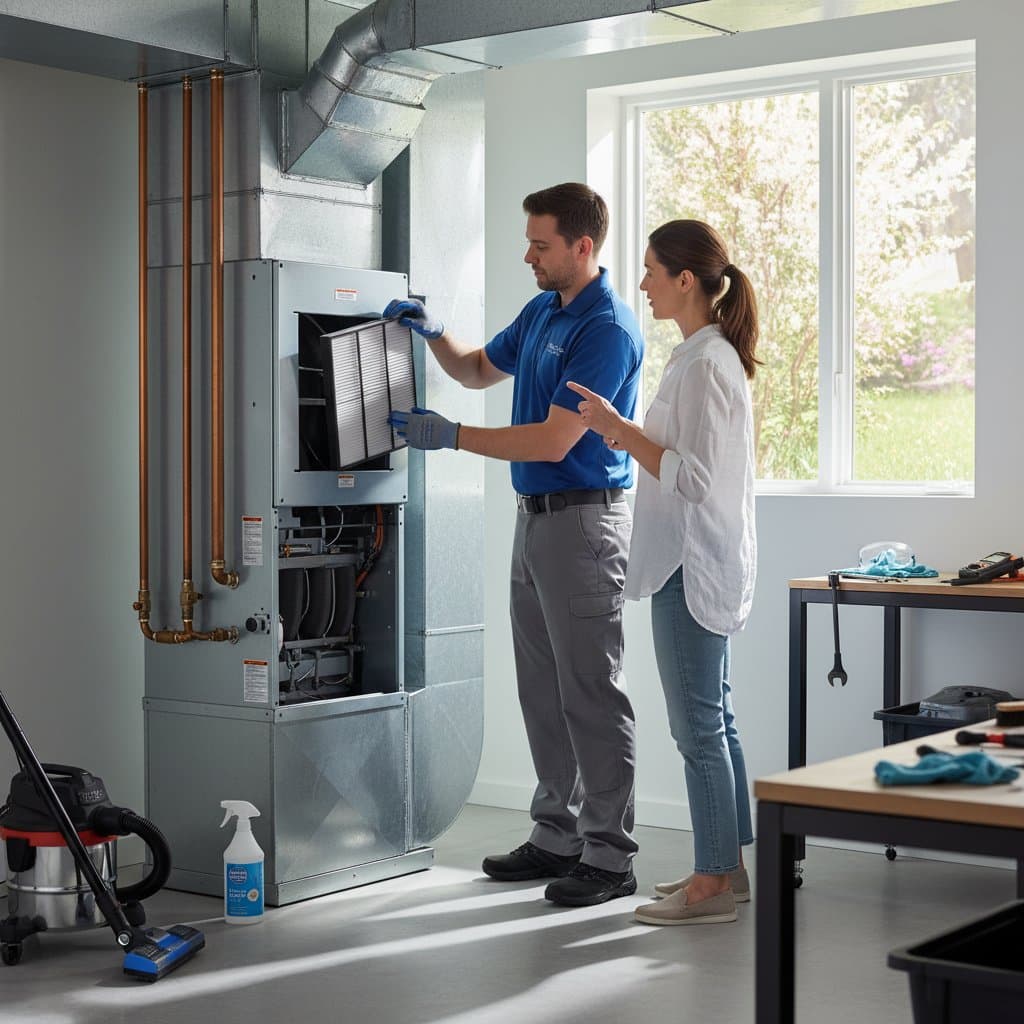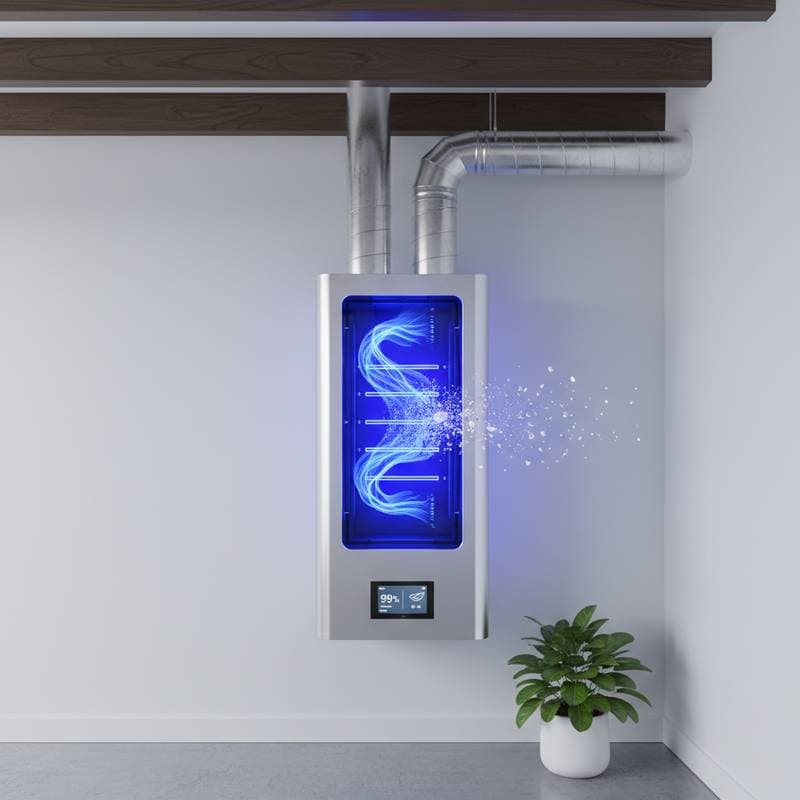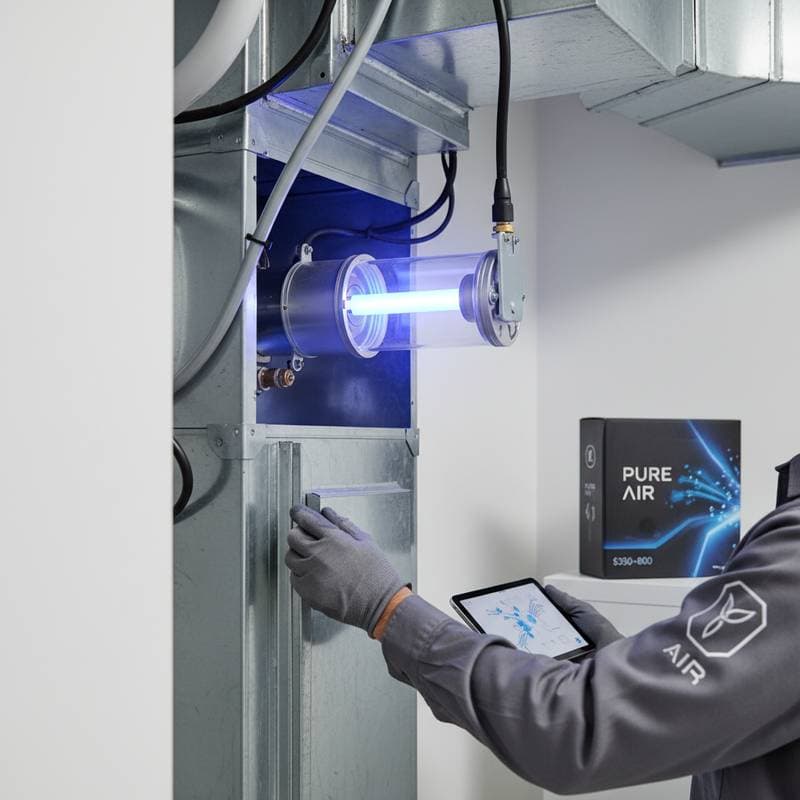Eight Spring Maintenance Steps to Prevent AC Breakdowns
As warmer weather approaches, your air conditioning system assumes a critical role in maintaining home comfort. Spring preparation equips the unit for intensive summer operation. Preventive measures at this stage minimize repair expenses, sustain efficiency, and promote longevity.
The following eight steps offer practical guidance. Each focuses on key components to ensure reliable performance throughout the season.
1. Replace or Clean the Air Filter
A dirty air filter restricts airflow, forces the system to work harder, and reduces cooling effectiveness. Clogged filters also contribute to higher energy consumption and potential damage to internal parts.
What to do:
- Inspect the filter monthly and replace it every one to three months, depending on usage.
- Select a filter with a MERV rating suitable for your system, typically between 8 and 13 for residential units.
- Install the new filter with the arrow pointing toward airflow direction.
Fresh filters enhance air quality and system performance from the start of the season.
2. Clear Debris Around the Outdoor Unit
Accumulated leaves, twigs, and soil around the outdoor condenser impede airflow and lead to overheating. Poor ventilation strains the compressor and diminishes overall efficiency.
What to do:
- Trim vegetation to maintain at least two feet of clearance on all sides.
- Gently remove debris from the top and sides using a soft brush or hose.
- Inspect for bird nests or pest activity within the unit housing and remove safely.
A clear surroundings permits optimal operation and prevents premature wear.
3. Clean the Indoor Evaporator Coils
Dust and grime on evaporator coils hinder heat absorption, causing the system to cycle longer and consume more energy. Neglected coils may foster mold growth, affecting indoor air quality.
What to do:
- Locate the coils behind the air handler or furnace and turn off power before access.
- Use a soft brush or coil cleaner to remove buildup, followed by a gentle rinse if accessible.
- Allow coils to dry completely before restoring power.
Clean coils restore cooling capacity and support healthier home environments.
4. Check the Thermostat Settings
An inaccurate or inefficient thermostat triggers excessive system runtime, elevating energy bills and stressing components. Modern alternatives provide precise control and automation features.
**What to do:**n- Verify temperature readings against a separate thermometer for accuracy.
- Consider installing a programmable or smart thermostat to optimize schedules.
- Adjust settings to raise temperatures by two to four degrees when the home is unoccupied.
Proper calibration reduces wear and promotes energy conservation.
5. Schedule a Professional Tune-Up
Annual inspections by qualified technicians uncover hidden issues like refrigerant leaks or electrical faults. Professional service ensures compliance with manufacturer guidelines and safety standards.
What to do:
- Contact a licensed HVAC professional early in spring to book an appointment.
- Request a comprehensive check including lubrication of moving parts and refrigerant level assessment.
- Discuss any recent performance changes during the visit.
Expert tune-ups identify problems early and maintain peak efficiency.
6. Test the System Early
Delaying activation until summer heat arrives risks discovering faults during high-demand periods. Early evaluation allows ample time for corrections without service delays.
What to do:
- Activate the AC on a moderate spring day and monitor operation for 15 to 30 minutes.
- Listen for abnormal sounds such as rattling or hissing, and assess airflow strength.
- Confirm cool air distribution reaches all areas of the home.
Prompt detection averts disruptions when comfort is most needed.
7. Inspect Drainage Lines and Electrical Connections
Clogged condensate drains can cause water damage and system shutdowns, while loose wiring poses safety hazards and inefficiency. Routine checks prevent these common failures.
What to do:
- Flush drain lines with a vinegar solution to clear algae and debris.
- Examine electrical connections for tightness and signs of corrosion.
- Replace any frayed wires or worn components as needed.
Secure drainage and wiring safeguard the system against avoidable interruptions.
8. Review Energy Efficiency and Upgrade Options
Aging units lose efficiency over time, leading to higher operating costs. Evaluating replacements identifies opportunities for improved performance and potential incentives.
What to do:
- Research SEER ratings, aiming for at least 14 or higher for new models.
- Inquire with contractors about available rebates, tax credits, or financing plans.
- Explore variable-speed compressors for enhanced comfort and savings.
Strategic upgrades deliver long-term benefits in cost and reliability.
Maintain Peak Performance for Summer Comfort
Implementing these steps fortifies your air conditioning system against summer challenges. Clean components and timely interventions reduce the likelihood of failures and associated expenses.
Address any ongoing concerns, such as inconsistent cooling or unusual sounds, through professional assistance. Consistent care preserves equipment integrity and delivers dependable cooling when temperatures peak.





